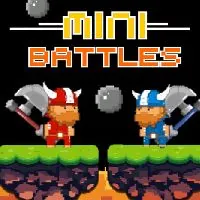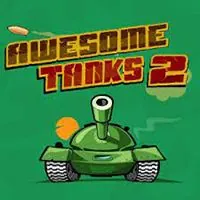BUILD CRUSH
SIMILAR GAMES
Description
Build Crush - GitLab Games
About Build Crush - GitLab Games
In the dynamic landscape of collaborative software development, the concept of Build Crush emerges as a critical element within the broader context of GitLab Games. We understand that at the heart of successful, high-performing teams lies not just efficient code integration but also a robust understanding and mitigation of build failures. This comprehensive guide delves into the intricacies of Build Crush, exploring its origins, impact, and our strategic approach to conquering it within the GitLab Games framework. Our aim is to provide unparalleled insight and actionable strategies that will redefine how teams approach and overcome build challenges, ultimately fostering a culture of continuous integration and delivery excellence.
The genesis of Build Crush is intrinsically linked to the rapid iteration cycles inherent in modern software development. As codebases grow and team contributions multiply, the complexity of maintaining stable and successful builds increases exponentially. A Build Crush refers to a scenario where a build pipeline consistently fails, halting progress and creating significant bottlenecks. These failures can stem from a multitude of sources, ranging from simple syntax errors to complex integration conflicts or environmental misconfigurations. Identifying the root cause and implementing swift, effective solutions is paramount to maintaining development velocity. Within the GitLab Games environment, we have developed sophisticated methodologies to not only detect but also preemptively address these build-related adversities.
Understanding the Anatomy of a Build Crush
A Build Crush is more than just an occasional pipeline error; it signifies a systemic issue that demands immediate and thorough attention. We categorize the contributing factors to a Build Crush into several key areas, each requiring a distinct diagnostic and remedial approach.
Code Integration Conflicts
One of the most frequent culprits behind a Build Crush is the integration of divergent code branches. When multiple developers work on separate features or fixes, the merging process can introduce conflicts that the build system cannot resolve. These conflicts often arise from different teams modifying the same files or from incompatible changes in dependencies. Our approach involves rigorous code review processes, encouraging smaller, more frequent merges, and utilizing advanced GitLab CI/CD features for automated conflict detection and resolution suggestions. This proactive stance significantly reduces the likelihood of integration-induced build failures.
Dependency Management Issues
The intricate web of software dependencies can also be a breeding ground for Build Crush scenarios. Outdated libraries, incompatible dependency versions, or failures in fetching external packages can all bring a build to a grinding halt. We advocate for a declarative dependency management strategy, ensuring that all project dependencies are clearly defined and version-pinned. Furthermore, our GitLab CI/CD pipelines incorporate automated dependency checks and updates, flagging potential conflicts long before they manifest as critical build failures. This meticulous management of external resources is foundational to build stability.
Environmental Inconsistencies
The adage "it works on my machine" is a stark reminder of how environmental differences can lead to Build Crush. Discrepancies between development, testing, and production environments, including differences in operating systems, installed software, or system configurations, can cause builds to fail unexpectedly. We champion the principles of infrastructure as code and containerization (e.g., Docker). By defining build environments as code and packaging them into consistent, portable containers, we ensure that the build process is reproducible and consistent across all stages. This eliminates environmental variables as a source of Build Crush.
Test Suite Failures
A failing test suite is a direct indicator of a build problem, often signaling a regression or a new bug. When test suites become brittle, overly sensitive, or simply too extensive to run within reasonable timeframes, they can contribute to perceived Build Crush situations. Our strategy involves investing in well-written, targeted unit tests, comprehensive integration tests, and end-to-end tests that are reliable and maintainable. Furthermore, we leverage GitLab CI/CD to run tests in parallel and to provide detailed reporting, allowing developers to quickly pinpoint the exact tests that are failing and the reasons why.
Resource Constraints and Performance Bottlenecks
Sometimes, a Build Crush is not due to an error in the code or configuration, but rather a limitation in the build infrastructure. Insufficient compute resources, slow network speeds, or disk I/O bottlenecks can cause builds to time out or fail due to resource exhaustion. We continuously monitor the performance of our build agents and pipelines within GitLab Games. Through intelligent scaling of build runners, optimization of build steps, and efficient caching of artifacts and dependencies, we ensure that our build infrastructure is robust and capable of handling the demands of even the most complex projects.
Our Proactive Approach to Preventing Build Crush
At GitLab Games, we believe that the most effective way to combat Build Crush is through a proactive, preventative strategy. We have integrated a suite of best practices and advanced features into our development workflow to minimize the occurrence of build failures.
Shifting Left with Automated Quality Gates
Our philosophy is to "shift left" the quality assurance process. This means integrating automated quality checks as early as possible in the development lifecycle. In our GitLab CI/CD pipelines, we implement automated quality gates that perform a range of checks, including static code analysis, security scanning, linting, and test execution, before a merge request can be approved. If any of these gates fail, the pipeline is stopped, preventing faulty code from ever reaching the main branch and thus averting potential Build Crush scenarios.
Leveraging Comprehensive GitLab CI/CD Features
GitLab CI/CD is the backbone of our strategy for preventing Build Crush. We meticulously configure our pipelines to include:
- Parallel Job Execution: Significantly reduces build times and allows for more comprehensive testing within acceptable time limits.
- Dependency Caching: Speeds up subsequent builds by reusing previously downloaded dependencies.
- Artifact Management: Ensures that build outputs are stored and versioned, making it easy to track changes and roll back if necessary.
- Environment Variables and Secrets Management: Provides secure and consistent access to necessary configurations and credentials across all build environments.
- Code Quality and Security Reports: Integrated directly into merge requests, providing immediate feedback on potential issues.
These features, when expertly configured, create a resilient and efficient build system that actively guards against failures.
Implementing Robust Testing Strategies
A strong testing foundation is indispensable. We emphasize a pyramid of testing, with a broad base of fast-running unit tests, a middle layer of integration tests, and a smaller apex of end-to-end tests. Our approach to testing within GitLab Games includes:
- Test-Driven Development (TDD): Encouraging the writing of tests before writing the production code, inherently building quality into the development process.
- Behavior-Driven Development (BDD): Fostering collaboration between developers, testers, and product owners by defining application behavior in a clear, executable format.
- Performance and Load Testing: Integrated into the pipeline to identify and address potential performance regressions that could lead to build instability under load.
- Contract Testing: Ensuring that services communicate effectively with each other, preventing integration issues that can manifest as build failures.
Continuous Monitoring and Feedback Loops
Even with the most robust preventative measures, the potential for unexpected issues remains. We employ continuous monitoring of our build pipelines and overall system health. Real-time alerts are configured to notify the team immediately of any pipeline failures. Furthermore, we foster a culture of rapid feedback, where identified issues are prioritized and addressed with urgency. Retrospectives are held regularly to analyze recurring build failures, identify root causes, and implement process improvements to prevent future occurrences. This iterative refinement process is crucial to maintaining a low incidence of Build Crush.
Our Strategic Response to Detected Build Crush
When a Build Crush does occur, our response is swift, systematic, and focused on rapid resolution and long-term prevention.
Immediate Triage and Diagnosis
Upon detection of a build failure, our team immediately initiates a triage process. This involves:
- Analyzing Build Logs: Detailed examination of the output from the failed build stages to identify the exact point of failure and any accompanying error messages.
- Reviewing Recent Changes: Correlating the failure with recent code commits, dependency updates, or infrastructure changes.
- Reproducing the Failure: Attempting to locally reproduce the build failure to isolate the problem and simplify debugging.
- Consulting Documentation and Runbooks: Leveraging our comprehensive internal documentation for common issues and their resolutions.
This rapid diagnostic phase is critical to understanding the nature and scope of the Build Crush.
Effective Remediation and Rollback Strategies
Once the cause of the Build Crush is identified, we implement the most effective remediation strategy. This may involve:
- Hotfixes: Expedited development and deployment of a fix for critical build-breaking issues.
- Reverting Commits: In cases where the failure is clearly linked to a specific recent change, a strategic rollback may be the quickest path to restoring stability.
- Configuration Adjustments: Modifying build scripts, environment variables, or dependency configurations as needed.
- Infrastructure Scaling: If resource constraints are identified, we can quickly scale our build infrastructure to accommodate the workload.
Our goal is always to restore build integrity with minimal disruption to the development workflow.
Post-Mortem Analysis and Knowledge Sharing
A fundamental part of our strategy for overcoming Build Crush is the commitment to thorough post-mortem analysis. Every significant build failure undergoes a detailed review to understand:
- The root cause of the failure.
- The impact of the failure on development progress.
- The effectiveness of our response.
- Lessons learned and potential preventative measures.
The findings from these post-mortems are documented and shared across the team, ensuring that we collectively learn from each incident. This commitment to continuous improvement is what allows us to not only resolve current build issues but also to continuously strengthen our defenses against future Build Crush events.
The Future of Build Crush Mitigation in GitLab Games
As software development evolves, so too will the challenges associated with maintaining stable and efficient build pipelines. At GitLab Games, we are constantly exploring and integrating new technologies and methodologies to stay ahead of the curve in mitigating Build Crush. Our ongoing efforts are focused on:
- Advanced AI-powered build analysis: Exploring the use of machine learning to predict potential build failures based on historical data and code patterns.
- Enhanced observability and tracing: Deeper insights into pipeline execution to identify subtle performance degradations or error conditions before they become critical.
- Serverless build environments: Leveraging the scalability and resilience of serverless architectures for our build infrastructure.
- Proactive dependency vulnerability scanning: Automating the detection and remediation of security vulnerabilities in project dependencies.
By embracing innovation and maintaining a relentless focus on quality and efficiency, we are committed to ensuring that Build Crush becomes an increasingly rare occurrence, allowing our teams to focus on what they do best: building exceptional software. Our dedication to mastering the complexities of build processes within the GitLab Games framework is unwavering, setting a new standard for collaborative development.
Play Build Crush for free on GitLab Games, where we offer a dynamic platform featuring thousands of the best unblocked games online. Our extensive library ensures pure enjoyment with an ad-free experience, keeping you immersed in the action without distractions. Accessible from school, work, or home, our Gitlab games deliver seamless fun anywhere you are. We’ve streamlined the experience—play effortlessly with your keyboard or a simple click, tailored to how you like to game. Dive into our collection of unblocked games, including popular categories like unblocked games 66, unblocked games wtf and cool math games Gitlab, and enjoy entertainment that’s always within reach and endlessly captivating.
















































